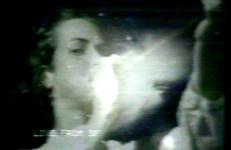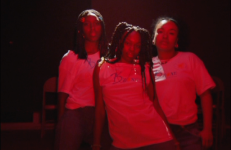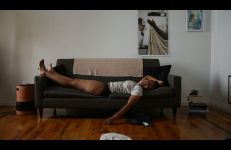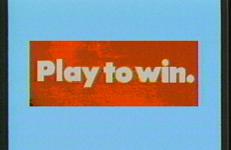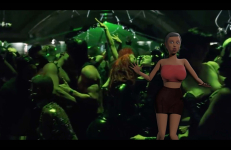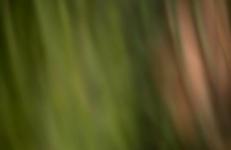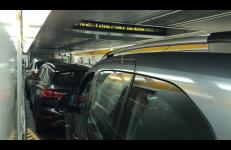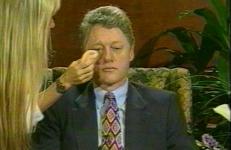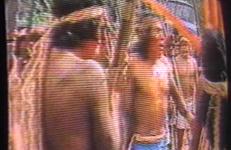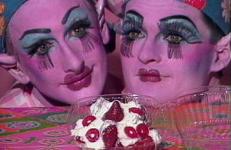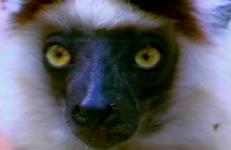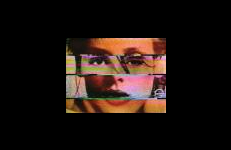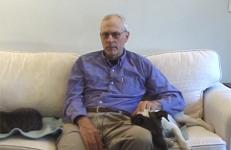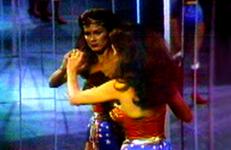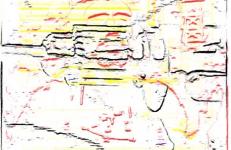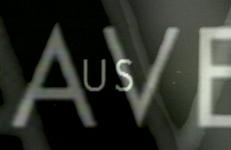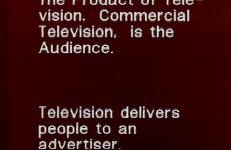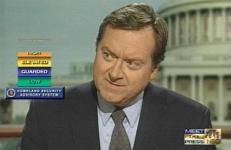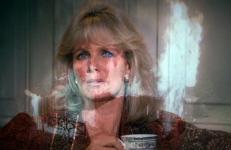A primer in satellite system operation, Send/Receive extends the critique of media as commodity by asking questions concerning the people's right to access satellites. The objective of Send/Receive was specifically to connect groups of artists on the East and West Coasts via public satellite, and it was the first artist-initiated project to do so.
Television
She Mad is an episodic project that uses fragments from the sitcom format to explore the sign of blackness in the public imagination. It is a way to think about surveillance, visibility, and the gulf between lived experience and representation. The show follows Martine, a graphic designer who wishes she were an important artist. She is an overachieving stoner who lives in Hollyweird.
Syms’s 4-channel installation — avaliable through VDB as a single channel video — follows the central character (an aspiring artist also named Martine Syms) on a journey home from the dentist after receiving “laughing gas.” Mixing multiple points of view, clips borrowed from TV, as well as layers of comedy, fiction, reality, and critique, Syms’ work also delves into issues of race, culture, and representation.
Slip is from Martine Syms’ Kita’s World series. Kita enacts the performances of everyday life in a hyper-digitized world. The character’s roles range from meditation guru to cultural commentator, and she speaks directly to questions of consciousness within the systems of labor, race, technology, and institutional failure. To the cognitive dissonance of Siri mishearing her speech, to the terror of (mis)representation, to the instinct to reconnect with nature.
Slogans is a visual deconstruction of advertising slogans, a literal and metaphorical illustration of the disintegration and loss of meaning in the contemporary media landscape. Appropriating text from a series of familiar print advertisements—Choose Your Weapon, Play To Win, Talk Is Cheap—Muntadas enlarges, digitizes, and overlays words until they devolve into abstract mosaics. Accompanied by a banal muzak soundtrack, this display of text as image demonstrates advertising's insidious transformation of language into empty signifiers.
Soliloquy is from Martine Syms’ Kita’s World series. In the series, Kita enacts the performances of everyday life in a hyper-digitized world. The character’s roles range from meditation guru to cultural commentator, elaborating on questions of race, gender, and technology prevalent throughout the artist’s practice. In these video works, Syms creates an environment in which being human is inextricably linked to the impact and interruptions of technological innovation.
Standing on the brink of elimination, the suspense threatening to fracture their composure, contestants wait and see if they will be going home. The audience at home is also waiting... Part two of Bearing Witness Trilogy.
On December 1st 1990, watched by the world's media, construction worker Graham Fagg of Dover climbed through a hole in a chalk wall 40 metres below the seabed of the English Channel, shook the hand of Philippe Cozette of Calais, and shouted "Vive la France!" On June 23rd 2016 Britain voted to leave the European Union. Inspired by a message for motorists on Eurotunnel trains, Song for Europe is an underwater celebration of Britain’s connection to mainland Europe.
Pirated satellite feeds revealing U.S. media personalities’ contempt for their viewers come full circle in Spin. TV out-takes appropriated from network satellite feeds unravel the tightly-spun fabric of television—a system that silences public debate and enforces the exclusion of anyone outside the pack of journalists, politicians, spin doctors, and televangelists who manufacture the news. Spin moves through the L.A. riots and the floating TV talk-show called the 1992 U.S. presidential election.
Beginning with the arrival by canoe of a TV and VCR in their village, The Spirit of TV documents the Waiãpi people’s first encounter with TV images of themselves and others. They view a tape from their chief’s first trip to Brasilia to speak to the government, news broadcasts, and videos of other Brazilian native peoples, and record a session directed by Chief Waiwai for villages in his territory.
Beginning with the arrival by canoe of a TV and VCR in their village, The Spirit of TV documents the Waiãpi people’s first encounter with TV images of themselves and others. They view a tape from their chief’s first trip to Brasilia to speak to the government, news broadcasts, and videos of other Brazilian native peoples, and record a session directed by Chief Waiwai for villages in his territory.
Having a party and in a fix for a dessert? The “Lady” Bunny has just the recipe: combine a doughnut, Cherry 7-Up, jelly, strawberries, and whipped topping.
This title is only available on Tom Rubnitz Videoworks: Sexy, Wiggy, Desserty.
In Animal Charm's masterful example of video montage, a monkey is mesmerized as he watches two dolphins toss a woman from snout to snout. Go cross-eyed with cross-cutting. Sometimes, in order to prevent the insidious absorption of mass media, it is necessary to apply Vaseline to your eyes and ears. Other times, you only need to watch Stuffing — it’s inside of everything.
Constructed from a destroyed rescan of fashion magazine ads and a video self-portrait, Suspension is a meditation on the implicitly narcissistic nature of desire within a commodified context.
In Takeover of the Empire State Building, Brenda and Glennda visit the top of the Empire State Building as it is lit up in lavender for Gay Pride. They interview both tourists visiting the building, and activists who have come to see the lights. Ultimately, they question whether this gesture is adequate, or if there is still a way to go until equality is achieved.
This two-part episode features Glenn Belverio and Duncan Elliott participating in an ACT UP demonstration at President George Bush’s summer house in Kennebunkport, Maine, interviewing activists and documenting this historic event. In addition to this, Brenda Sexual and Glennda Orgasm attend Wigstock, an annual outdoor drag festival in Manhattan's East Village. At the festival, they rally for National Healthcare and discuss other issues such as violence against LGBTQ+ people.
This two-part episode features Glenn Belverio and Duncan Elliott participating in an ACT UP demonstration at President George Bush’s summer house in Kennebunkport, Maine, interviewing activists and documenting this historic event. In addition to this, Brenda Sexual and Glennda Orgasm attend Wigstock, an annual outdoor drag festival in Manhattan's East Village. At the festival, they rally for National Healthcare and discuss other issues such as violence against LGBTQ+ people.
Parry Teasdale is one of the founding members of the video art collective Videofreex, which was active in the 1960s and 70s. In this extensive two-part interview Teasdale explores the collective’s motivations and endeavors, which embodied the social and political concerns of the period.
A stutter-step progression of "extended moments" unmasks the technological "miracle" of Wonder Woman's transformation, playing psychological transformation off of television product.
My TV Dictionary: The Drill (1986) translated through digital filtering in 2014.
Holzer adopts the form and language of commercial messages to disrupt communication, presenting kamikaze texts that are designed to stimulate thought, with humor, and inspire a critical attitude in an often passive audience. As in all of Holzer’s work, these television spots present deceptively simple sequences of text that mix provocative social commentary with resonant poetic reflection.
Television Delivers People is a seminal work in the now well-established critique of popular media as an instrument of social control that asserts itself subtly on the populace through “entertainments,” for the benefit of those in power—the corporations that mantain and profit from the status quo. While canned Muzak plays, a scrolling text denounces the corporate masquerade of commercial television to reveal the structure of profit that greases the wheels of the media industry. Television emerges as little more than a insidious sponsor for the corporate engines of the world.
The Telling (1994-98) shows Anne McGuire telling two acquaintances a secret from her past using a three-camera set-up in the Desi Arnez style. The commodification of intimacy is not the strangest thing about this work. The fractured editing, silences, and lapses in continuity suggest vast narratives far more evocative than anything revealed on screen. McGuire uses television vernacular ambiguously to provoke discomfort, two things that television strives to avoid at all costs.
The cabin is on fire! Krystle can't stop crying, Alexis won't stop drinking, and the fabric of existence hangs in the balance, again and again and again. – MR
"The Dark, Krystle brilliantly re-purposes the artificiality of stock gesture, allowing viewers to see its hollowness and to feel it recharging with new emotional power. Equal parts archival fashion show and feminist morality play, Robinson's montage rekindles the unfinished business of identity, consumption, and excess in 1980s pop culture."
— Carrie Secrist Gallery, Chicago




